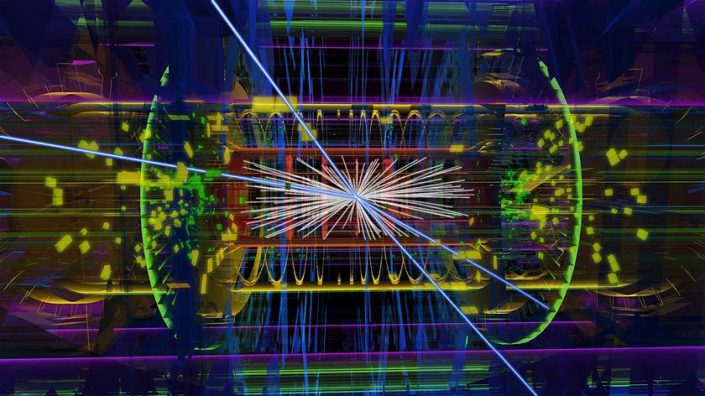Team of string physicists proposes new approach to supersymmetry

Image: CERN, the European Organization for Nuclear Research
One of the most heated debates in science surrounds the existence of supersymmetry, a theoretical model of physics predicting that each known particle in the universe has an undiscovered partner particle. It’s a theory with legs in no small part because of its alluring potential to explain dark matter and dark energy, which jointly account for roughly 95 percent of the universe, and to tie together cosmology and particle physics at the earliest moments after the Big Bang.
Whether supersymmetry is proven or disproven, one thing is certain: Either result is expected to spawn a particle physics revolution. What’s not debatable, however, is that both breakthrough scenarios involve a substantial amount of sophisticated mathematics.
To that end, a Texas A&M University team led by physics professors Katrin Becker and Melanie Becker recently succeeded in computing the action of 11-dimensional supergravity resulting from a seven-dimensional Kaluza-Klein compactification, including all massive fields. The team also featured postdoctoral researchers Daniel Butter, Daniel Robbins (now an assistant professor at the University of Albany) and William Linch as well as graduate student Sunny Guha.
“For many years, string theorists thought that it is only possible to calculate the massless fields of a realistic Kaluza-Klein compactification,” Melanie Becker says. “New fields continue to emerge in the supersymmetry multiplets that have not emerged in any previous description. What does all this mean? We do not know yet, but it is clear that fascinating discoveries are waiting for their explanation.”
As for the explanation behind Kaluza-Klein, Katrin Becker notes that it was the year 1921 when Theodor Kaluza discovered the beautiful idea that gravitation and electromagnetism might be unified in a theory of five-dimensional Riemannian geometry. A few years later, the idea was further developed by Oscar Klein using quantum physics and many others thereafter and has since then been termed Kaluza-Klein, or KK, theory.
“The basic idea is very simple,” Katrin Becker explains. “Consider general relativity, the geometric theory of gravitation published by Albert Einstein in 1915 and our current description of gravitation in modern physics. In a five-dimensional view of space-time that is the product of an extremely small circle times our four-dimensional extended world, an observer cannot see the small circle, yet its properties are felt clearly. The observer notices the four-dimensional gravitational force as well as an electromagnetic force. He also becomes aware of the presence of a massless bosonic field along with an infinite tower of massive fields.”
String theory has been described as one of the most ambitious and exciting theories ever proposed — the long-sought “theory of everything” that eluded even Einstein. It postulates that 11 dimensions exist in nature — seven of which remain curled up and invisible, as opposed to Einstein’s three-dimensional space and one-dimensional time, which are rolled out or flat, allowing them to be seen. Many theoretical physicists, including Stephen Hawking, propose that the self-contained mathematical model is, indeed, the framework for all fundamental forces and forms of matter, not to mention the only viable candidate to unify gravity with quantum theory.
As a real-world example, Melanie Becker notes that we can observe boson particles, which essentially are the force-carriers, along with fermions that constitute the matter we see in our universe — the quarks and leptons. She describes supersymmetry as an elegant symmetry that rotates these bosons and fermions.
“Such a symmetry is not manifest in our everyday lives,” Melanie Becker adds. “It is broken, but it is believed it can be seen at very high energies in a particle accelerator. The experimental high-energy physics group at Texas A&M is carefully searching to find evidence for supersymmetry.

